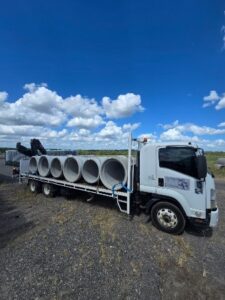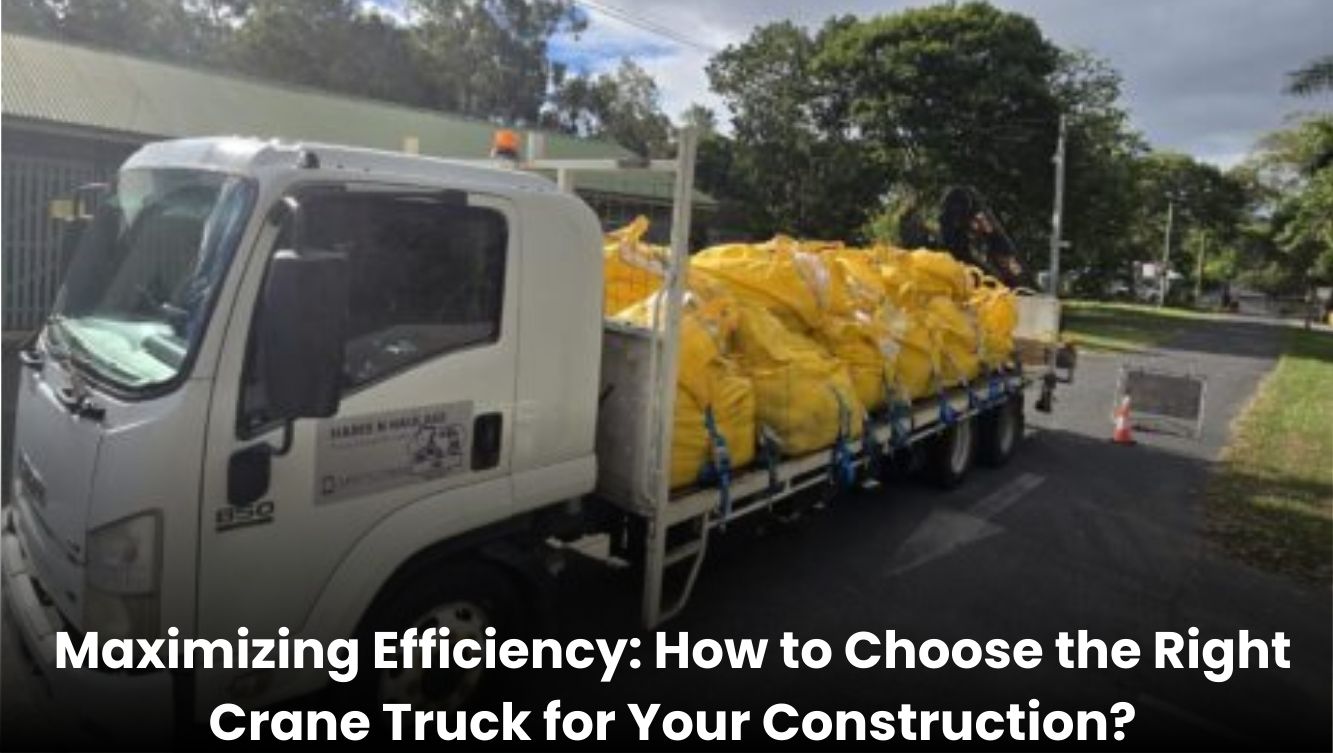Maximizing Efficiency: How to Choose the Right Crane Truck for Your Construction?
Understanding the Role of Cranes in Construction Projects
Cranes play a vital role in construction, far beyond simply lifting heavy materials. They are essential tools that bring efficiency, safety, and precision to modern building projects. Whether it’s a tower crane on a high-rise or a mobile crane truck on a residential site, cranes help streamline operations, reduce manual labor, and speed up timelines.
In construction, time equals money. Cranes allow contractors to lift and place materials quickly and accurately, minimizing delays and maximizing productivity. They enable vertical movement that’s otherwise impossible — hoisting beams, concrete panels, HVAC units, and structural elements exactly where they’re needed.
Different types of cranes serve different needs. Tower cranes handle extreme heights, while mobile crane trucks are perfect for flexible, fast-moving projects. Their adaptability makes them ideal for urban construction, infrastructure, and heavy lifting on tight sites.
Cranes also enhance safety by reducing the physical strain on workers and minimizing risks associated with manual handling. As the industry leans toward sustainability, electric and hybrid cranes are also being used to lower emissions and noise.
In short, cranes are not just machines — they’re strategic assets that empower faster, smarter, and safer construction. Choosing the right one can make or break your project’s success.
How to Choose the Right Crane Truck for Your Project?

1. Assessing Your Project Needs
Let’s start with the part most people think they know — project needs. But here’s the twist: it’s not just about the weight you want to lift. You need to consider:
What are you lifting — and where is it going? A water tank? Structural beams? HVAC units to a rooftop? The load’s shape and fragility matter as much as weight.
How often will you be lifting? A one-time lift? Multiple loads per hour?
Site access restrictions: Can the crane even get to the site without taking down fences or blocking public roads?
Here’s a pro tip: map out your entire lifting process on paper before you even call a hire service. You’ll be shocked at the blind spots you uncover.
2. Understanding Crane Truck Types
Crane trucks aren’t one-size-fits-all. They’re like tools in a toolbox — pick the wrong one, and the whole job goes sideways. Let’s decode them like humans, not engineers:
Knuckle Boom (Articulating) Cranes: Like the yoga master of cranes. Flexible, nimble, and great for tight urban spaces. Perfect for tricky angles or lifting over obstacles.
Telescopic Boom Cranes: These are your tall, strong types. Think high-rise projects or anything that requires serious vertical reach.
Truck-Mounted Cranes: Designed for speed. You can drive them on highways, set up fast, lift, and move on. Ideal for mobile construction or utility projects.
3. Budgeting and Cost Analysis
You might be comparing hourly hire rates, but real cost goes deeper.
Setup and pack-down time: Some cranes take hours to assemble. You’re paying during that time.
Travel to site: Is your provider charging extra for transportation?
Operator charges: Is the operator’s time included in the quote?
Minimum hire windows: Some providers charge 4-hour minimums even if you need it for 90 minutes.
And here’s a golden rule: Don’t hire a crane truck based on price alone. A cheap crane with low capacity could turn your project into a two-day job — and that’s where you bleed budget.
4. Safety and Compliance
Crane accidents are rare, but when they happen, they’re devastating.
Before hiring, ask yourself:
- Is the crane certified for recent inspections?
- Is the operator fully licensed and familiar with your terrain or lift type?
- Will the lift block traffic, requiring council permits?
- Does the hiring company provide lifting plans or load charts?
Also, remember that your liability doesn’t disappear once the crane truck arrives. If you’re the project manager or site owner, you’re still responsible for safety compliance.
5. Environmental Considerations
In 2025, construction projects can’t ignore environmental impact, and crane trucks play a part.
Noise-sensitive zones? Choose an electric or hybrid-powered model.
Working near trees or wildlife reserves? Use cranes with a limited footprint or soft-ground setups.
Fuel efficiency? A heavier crane may burn more fuel without offering any additional lift value.
If your project is part of a green building certification, your equipment choices could affect your score.
6. Maintenance and Support
Crane trucks are heavy-duty machines, but they’re still machines. And machines break down. So the real question is: What’s your backup plan?
Before hiring, ask:
- Does the hiring company provide on-call support?
- How fast can they replace or repair a crane if there’s a breakdown?
- Are parts available locally? Or do they need to be shipped in?
Here’s something most contractors don’t ask (but should):
“Can I see your emergency support process in writing?”
If they stumble or delay, look elsewhere. Because every minute lost on a construction site costs money and trust.
Quick Checklist for Maximum Efficiency:
- Know your load weight and lift height
- Choose the crane type based on the job and site
- Plan lifts in advance with operators
- Use multi-functional trucks to save equipment time
- Check support, service, and maintenance before hiring
- Never compromise on safety
Read More: Hire Crane Trucks in Bundamba
FAQ
1. What are the factors for the selection of a crane?
The selection of a crane depends on various factors, including load weight, lift height, reach, site conditions, terrain, space availability, mobility requirements, and safety considerations.
2 Are all crane trucks suitable for rough terrain?
No, only specific models like all-terrain or rough-terrain cranes are designed for uneven ground.
3 How do I ensure the crane won’t break down mid-project?
Hire from a provider with certified equipment and emergency support.
4 Can one crane truck handle multiple tasks on-site?
Yes, multi-functional crane trucks can transport materials and lift them, saving time and resources.
5 What’s the difference between a crane and a crane truck?
A crane is stationary, while a crane truck is mobile and can transport materials and lift them on-site.


Comments are closed